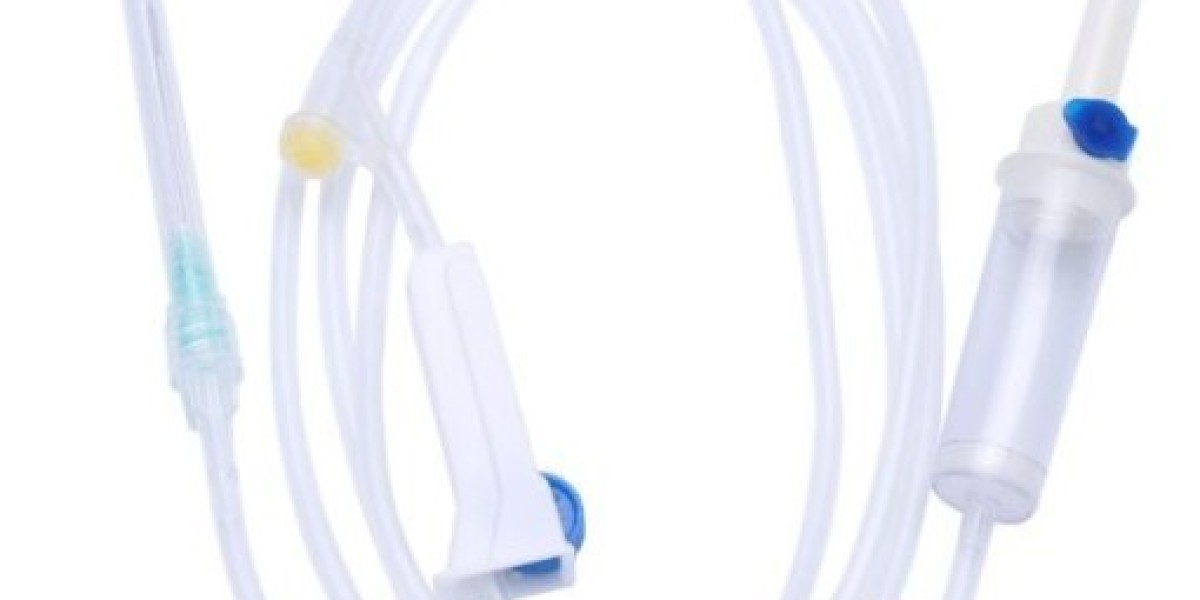As medical technology continues to advance, one of the most significant innovations that has emerged is the disposable infusion set. Infusion therapy—where medications, fluids, or nutrients are delivered directly into a patient's bloodstream via a needle or catheter—has been a cornerstone of modern medicine for years. However, the traditional practice of reusing infusion sets carries several risks, both to the patient and healthcare professionals. The advent of disposable infusion sets offers a new paradigm, improving both safety and efficiency.
Understanding Infusion Therapy and Infusion Sets
Infusion therapy is used for various treatments, including the administration of chemotherapy, antibiotics, and nutritional support. It is also a critical component of pain management, dehydration treatment, and the management of chronic conditions like diabetes. Infusion sets are the medical devices used to deliver these treatments. They are typically made up of a needle or catheter, tubing, and sometimes a pump to control the flow of fluids.
In the past, many infusion sets were reused, which carried a host of potential problems. Reusing medical equipment, especially devices that come into direct contact with blood vessels, increases the risk of infection, complications, and contamination. The introduction of disposable infusion sets has revolutionized this practice by eliminating these risks and improving healthcare outcomes.
Safety First: The Key Advantage of Disposable Infusion Sets
The most significant advantage of disposable infusion sets is the dramatic reduction in the risk of infection. Reused sets can harbor bacteria, viruses, and other pathogens, leading to dangerous infections. Even with rigorous cleaning and sterilization practices, there is always the possibility that a reused device could be contaminated. Disposable infusion sets, on the other hand, are single-use and sterile, significantly reducing the risk of cross-contamination and healthcare-associated infections (HAIs).
Infection control is a major concern in healthcare settings, as HAIs contribute to extended hospital stays, higher treatment costs, and, in some cases, preventable patient deaths. According to the Centers for Disease Control and Prevention (CDC), approximately one in 31 hospital patients has at least one healthcare-associated infection on any given day. By implementing disposable infusion sets, healthcare facilities can help lower these infection rates and improve overall patient safety.
Moreover, disposable infusion sets eliminate the need for complex reprocessing procedures. Reprocessing and sterilization of reusable devices require specialized equipment and trained staff, and even with these efforts, there is still the potential for human error. By switching to disposable sets, hospitals can streamline their processes, saving time, reducing the chance of mistakes, and ensuring that every patient receives a fresh, sterile device.
Enhancing Efficiency in Healthcare Delivery
In addition to improving safety, disposable infusion sets also contribute to the efficiency of healthcare delivery. Healthcare professionals can focus more on patient care rather than spending time cleaning and reprocessing equipment. This is particularly important in high-demand settings like emergency rooms, intensive care units (ICUs), and surgical theaters, where time is critical.
By reducing the need for cleaning and sterilization, healthcare providers can ensure that infusion sets are ready for immediate use. This not only saves time but also ensures that the correct devices are available when needed, avoiding delays in patient treatment. Furthermore, disposable sets can be more cost-effective in the long run, as the cost of cleaning and maintaining reusable equipment can add up quickly.
Reducing Risk of Cross-Contamination
Cross-contamination is a significant concern in healthcare, especially in settings like blood transfusions, chemotherapy, and dialysis, where a failure to maintain a sterile environment can have severe consequences. Reused infusion sets can carry residual fluids or medications from previous uses, potentially leading to harmful interactions. Disposable infusion sets eliminate this risk by ensuring that each set is used only once, with no residual fluids or medications that could be transferred to a new patient.
This level of safety is crucial not only for individual patients but also for public health. In many parts of the world, medical facilities are under pressure due to limited resources. By providing a safe, single-use alternative, disposable infusion sets help healthcare systems maintain high standards of care even in resource-constrained environments.
Environmental Considerations: The Challenge of Sustainability
While disposable infusion sets offer numerous advantages in terms of safety and efficiency, there are valid concerns about their environmental impact. The widespread use of disposable medical devices contributes to the growing issue of medical waste. However, manufacturers are increasingly aware of these concerns and are working toward producing more eco-friendly options. For instance, some companies are developing infusion sets made from biodegradable materials or designing products that can be safely recycled.
Additionally, healthcare systems can adopt strategies to manage medical waste more effectively. By incorporating recycling programs and promoting responsible disposal practices, the healthcare industry can balance the need for disposable products with environmental sustainability.
The Future of Healthcare: Widespread Adoption of Disposable Infusion Sets
As healthcare systems around the world continue to evolve, disposable infusion sets will likely become the standard due to their significant advantages. Their ability to enhance patient safety, reduce the risk of infection, and improve the efficiency of healthcare delivery makes them an indispensable tool in modern medicine. As technology advances, we can expect even more innovations in the design and materials used for these devices, further improving their performance and reducing their environmental impact.
In conclusion, disposable infusion sets represent a critical step toward safer, more efficient healthcare. By minimizing the risks associated with reusing infusion sets and improving the quality of care patients receive, these devices will play a pivotal role in the future of medical treatment. As the healthcare industry continues to prioritize patient safety and operational efficiency, disposable infusion sets will be at the forefront of this transformation, helping to ensure that patients around the world receive the best possible care.









